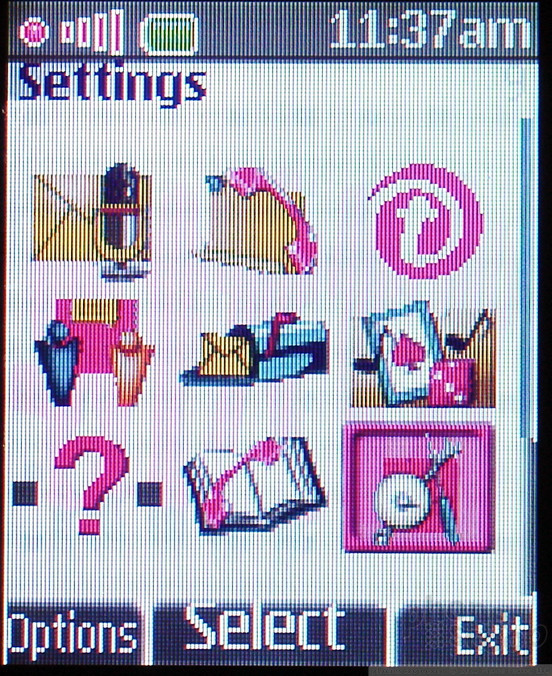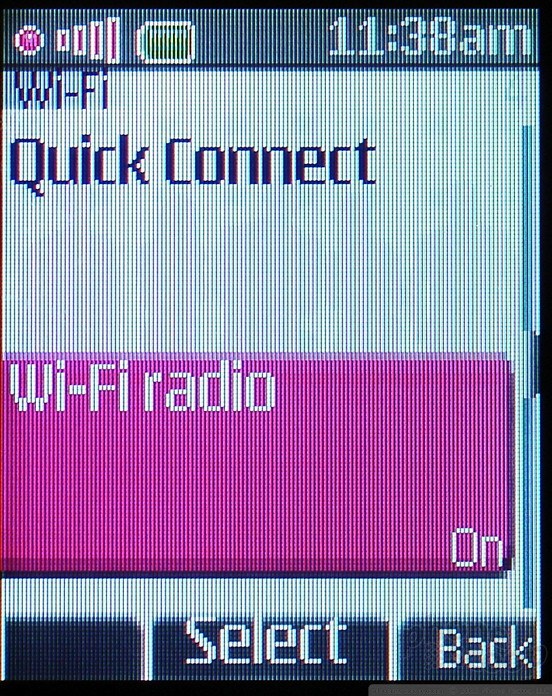T-Mobile HotSpot @Home Review
Jun 26, 2007, 11:00 PM by Eric M. Zeman
Phone Scoop's In Depth review of T-Mobile's new HotSpot @Home service, plus video demo.
Basics
Intro
This is Phone Scoop's in-depth look at the new HotSpot@Home service from T-Mobile, which goes live today. The service lets users roam between cellular and Wi-Fi networks seamlessly for calling. Do two radios make for a better cell phone?
Technology
HotSpot@Home uses a technology called Unlicensed Mobile Access (UMA) to allow phones to make calls over Wi-Fi networks. Combining UMA with traditional cellular telephony (GSM or CDMA) in one handset, and you have a dual-mode phone that can roam between cellular and Wi-Fi networks. When in supported, open Wi-Fi coverage, the connection uses the Internet to reach the carrier's switching systems to route the call. If no Wi-Fi networks are available, the call goes through the cellular network as normal.
When at home or the office the phone makes all calls via the Wi-Fi connection, no matter how strong cell coverage may be. If you originate a call at your house/office and then leave your house/office, the phone will automatically and seamlessly switch the call from the Wi-Fi network to the regular cellular network. And vice versa: if you originate a standard cell call while out and about, then return home, the call will automatically transfer from the cellular network back to the Wi-Fi network.
This benefits us, the users, in a few ways. When calls take place over the Wi-Fi networks, they are not counted against monthly minute allotments; users simply pay a small flat rate per month for Wi-Fi calls. Also, if the user happens to live or work in an area with poor network coverage, Wi-Fi can provide enhanced localized coverage. The technology also benefits the network operators, who can free up space on their cellular networks when calls are placed over the Wi-Fi networks. This reduces their costs as well as helps provide more bandwidth to reduce the number of times users see the dreaded "network busy" message.
Setting Up
While all this technology might sound complicated, in practice, it could not have been easier to use. We received a review unit (a Nokia 6086) and D-Link Wi-Fi router from T-Mobile. T-Mobile suggests that subscribers use its branded routers for optimal performance, but it will also work on existing unlocked Wi-Fi networks, as well as all T-Mobile HotSpots such as those in Starbucks and Borders.
We unboxed the router and plugged it into our home network. We already have a regular Wi-Fi router, so this meant we had two Wi-Fi networks up and running. Once we turned on the phone, it automatically connected to the T-Mobile HotSpot without us having to configure the phone or make any adjustments. This was all the set up required: plugging in the router and turning on the phone. It doesn't get much easier than that.
First Experiences
After we had the system up and running, we immediately made a phone call. The first call we made from within the T-Mobile HotSpot was perfectly clear, and there was absolutely no discernible difference between the call placed over Wi-Fi and calls later placed from the cellular network.
After making several calls from the T-Mobile HotSpot, we went into the phone's settings to see what we could adjust. There is no hard key to turn the Wi-Fi on or off, it is only controlled via software in the settings menu. Once inside the Wi-Fi manager program, there are a number of applications: Available Networks, Saved Networks, Quick Connect, Wi-Fi Radio On/Off, Get Security Key, Add to Saved Networks, and Help.
Hitting the "Available Networks" key forces the phone to actively scan for Wi-Fi networks. This took only about 4 seconds, and it showed a list of all the available networks. The T-Mobile HotSpot network was listed at the top, and had a check mark next to it to let us know that we were connected to that network. It also listed our home network, as well as 4 other networks trickling in from neighboring homes. Using the menus, we were able to actively change which network the 6086 connected to. As long as the networks were unlocked, the phone connected easily. Our home network has an encryption key. When we attempted to connect to the home network, it requested the key. After entering the key, it connected and asked if we wanted to remember the passkey. From then on, the network was saved in our Saved Networks folder and the phone connected automatically to it without having to re-enter the passkey.
The "Saved Networks" folder is simply a list of networks the phone has connected to and the Quick Connect function allows you to pre-set which networks to connect to first. The Wi-Fi Radio On/Off is the software switch for the Wi-Fi radio. Using all these functions was relatively intuitive, as the number of choices within each is limited to one or two.
Just to see what sort of cellular network coverage T-Mobile offers in our testing site, we turned off the Wi-Fi radio. The Nokia 6086 uses two different radio strength indicators to let you know which type of network you are connected to and how good the connection is. In standard cellular networks, the signal indicator appears as normal, antenna with ascending bars next to it. In Wi-Fi coverage, the antenna turns into a little reddish/orange ball, with radio signals emanating outward from it. Once the Wi-Fi radio was switched off, the standard signal indicator appeared with 5 bars of coverage almost immediately. Switching the Wi-Fi radio back on, we had to wait about 15-20 seconds for the phone to reacquire the network. After it did, the orange ball and radio signals appeared in the signal strength indicator spot.
Using It
Out In the Real World
After these initial tests and set-up tasks were completed, we took the T-Mobile HotSpot@Home service for a real work out. Placing a call from my home, I walked outside and away from my house. I got about 20 feet down the road before the Wi-Fi signal dropped off and the call switched over to the cellular network. The call was clear during both the Wi-Fi and cellular portions of this call and the transfer was seamless. I then turned around and returned to my house. The 6086 didn't reconnect to the Wi-Fi network until after I walked inside, and upstairs to my office, where the router was located. We repeated this test several times and the result was the same each time.
Then I packed up and drove to a nearby Borders that has a T-Mobile HotSpot inside. From the parking lot, I initiated a cell call and then walked into the Borders and to the cafe, where the HotSpot is located. The phone took a solid 30 seconds to figure out that it was inside a HotSpot and transfer the call to the Wi-Fi network. In this exercise, the call placed on the cellular network was slightly crackly, and then cleared up once inside the HotSpot. When I walked away from the cafe and back outside, the call transferred back to the cellular network with no issues. Call quality of the Wi-Fi portion of the call was good.
We repeated this basic test again at a Starbucks with a T-Mobile HotSpot. This call was our first snag. The call connected fine via the cellular network outside, and again took about 20 seconds to recognize and connect to the Wi-Fi network inside the Starbucks. Upon leaving this network however, we had a problem with the handoff. The Wi-Fi signal dwindled down to one bar as we walked away from the Starbucks and rather than handoff the call to the cell network, it dropped the call. What was strange was that when I attempted to re-dial the number, I couldn't get through. On the other end, the person I called still had an open call, so the switch was still open and active, and the Nokia on my end wasn't able to reconnect with the circuit open. In the end, we had to power the phone down and back up to reset it. Also, the call clarity was poor on the cellular network at this location, and our callee reported an improvement in clarity once the phone switched to the Wi-Fi network.
We repeated this same test again at a variety of Starbucks HotSpots in New Jersey and Midtown Manhattan with good success.
Signal/Battery
Battery
Though the Nokia and T-Mobile literature both say the 6086 has 5 hours of talk time, we noticed that the battery went from a 50% charge to almost empty during the course of these tests. The tests were conducted over he course of several hours, but the sum total of the actual calling time during the testing was less than 30 minutes. So, either the battery life isn't quite up to par with the literature, or the battery life indicator is not accurate. Standby battery life was at least 4 days with both the cellular and Wi-Fi radios on.
Signal Strength
Wi-Fi signal strength depending on a number of factors, the most important of which was the distance between the phone and the router. Also, the presence of walls also cut down on signal. Walking around my house, Wi-Fi coverage ranged from 1 bar to 4 bars, depending on where I was.
Even when in strong Wi-Fi coverage, data calls to T-Mobile's T-Zones still went through the cellular network. The boxed "G" icon showed up in the status bar to let us know the data call was connected. So the T-Mobile HotSpot@Home service does not allow you to connect to the Internet via the Wi-Fi network. It is reserved for phone calls only.
Pricing
In order for the service to work, you have to have a plan, a phone, and a router. The HotSpot@Home service is available for $19.99 per month for individuals and $29.99 per month for families. The service will be on sale for a limited time at $9.99 per month for individuals and $19.99 per month for families. To start, only two phones will work with the service, the Nokia 6086 and the Samsung t409. Both of these are basic feature phones. T-Mobile subscribers who have devices such as the Wing will not be able to use the embedded Wi-Fi radios in their existing devices to access the service. Both the 6086 and t409 retail for $49.99 after rebates with two-year agreement. The T-Mobile-branded routers are also $49.99, but are free after a mail-in rebate.
Video
In our video review of HotSpot @Home, you can see how the phone hands off calls from the Wi-Fi network to the cellular network and back again. You can watch it here:
Or you can visit YouTube for more sharing options.
Wrap Up
Though there were a few small hiccups in our testing, the HotSpot @Home service generally worked well. It was very simple to set up and T-Mobile has made it a no-brainer for the average, non-techie consumer to buy and use this product off the shelf. That only two handsets work with the service is a bit limiting, but we expect T-Mobile to add to the number of dual-mode handsets capable of using this service over time (hopefully that will include some smartphones). For heavy talkers, especially those in poor network coverage areas, HotSpot @Home offers solid in-house coverage and a cheaper alternative to large voice plans.
Comments
T-Mobile HotSpot@Home Data connection
are the minutes prorated?
(continues)
Subscription Required ?
rgronenb said:
If I already have a home wifi router, do I still have to pay a monthly fee to T-Mobile for UMA?
No, you don't have to pay extra for UMA usage. You can use your existing router as well. You do, however...
(continues)
dumb question
wirelessjunkie said:
I'm sure this is a stupid question but what exactly is the point of this?
What's the point? Seriously? Have you ever had poor coverage at home? This eliminates that. You ever wanted unlimite...
(continues)
low long promotion will last?
2. It would be nice if there were sexier phones available in the very near future. Any rumors?
3. I'd love a 1-year contact. It seems like this service is not yet available through resellers like letstalk with 1-year contracts.
Thanks
Indigo
Rep in store said eventually most new phones will have it like they do with myfaves.
Why This Is A Great Idea For T-Mobile's Pockets
You have to be a min 39.99 rate plan which gives you 600 min.
You have to add $20 (Yes I know about the intro rate...even at $10 they get you) to get access to the unlim calling wi-fi option.
That would actually put your bill at $59.99...which on the regular T-mobile plans gives you 1500 Anytime.
They are counting on you NOT using more than 900 Additional minutes at home.
And for the people w...
(continues)
(continues)
Wi-Fi Security Options?
Also, the connection from the phone to t-mobile is an IPSec VPN connection, so even on an open hotspot the call is still secure.
How does 9-1-1 work on the wi-fi part?
International? (Question for the Eric's or Rich)
(continues)
According to the Hotspot@home Launch binder that we received, calls made internationally through a router...
(continues)
International Rates?
But ya, t-mo's international rates are the same weather or not you are using wifi
What was that buzz sound?
I first discovered it when I switched from Sprint ...
(continues)
gunny said:
When you walked from outside to inside, does it buzz when switching from a cellular signal to wifi?
This link is good in reference to your question: www.feelingcingular.com. T-Mobile and PlayStation 3 ar...
(continues)
SMS
Other phones?
Note that Wi-Fi is different from UMA. Most phones with wi-fi do not support UMA.
who is providing the GANC for UMA Call to T-Mobile
who is providing that GANC to T-Mobile
Looks Muy Cool
(continues)
I didn't notice any detrimental change in my home broadband network when using the phone.
Since this service is for voice calls only, it will NOT effect data sp...
(continues)























 Video: Live Demo of Snapdragon AI Noise Suppression
Video: Live Demo of Snapdragon AI Noise Suppression
 iPhone 14 Plus Offers a Big Screen For Less
iPhone 14 Plus Offers a Big Screen For Less
 iPhone 15 Series Goes All-In on USB-C and Dynamic Island
iPhone 15 Series Goes All-In on USB-C and Dynamic Island
 TCL 30 Series Headed to Verizon, T-Mobile
TCL 30 Series Headed to Verizon, T-Mobile
 Android and Google Devices Now Support Matter
Android and Google Devices Now Support Matter

